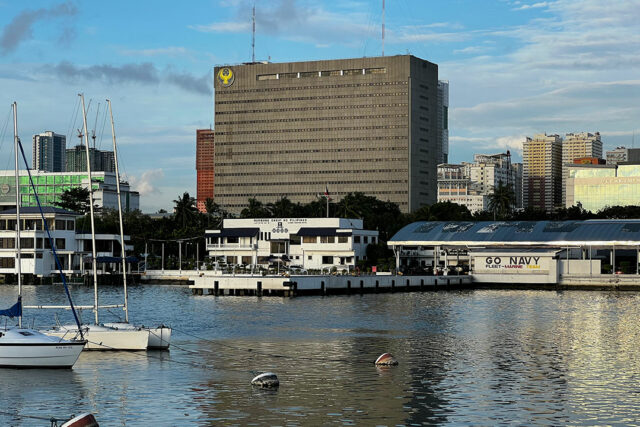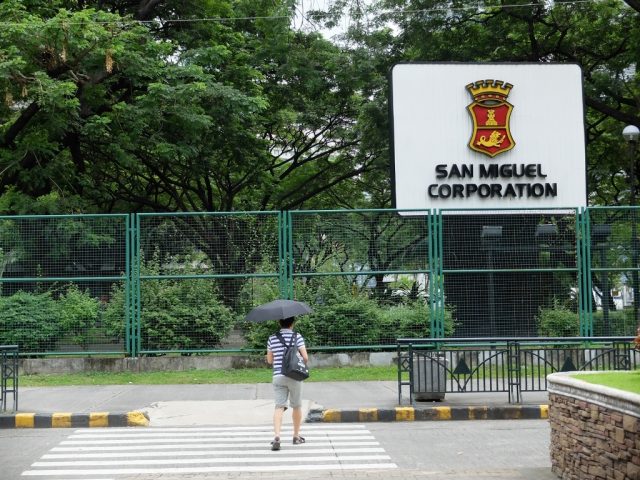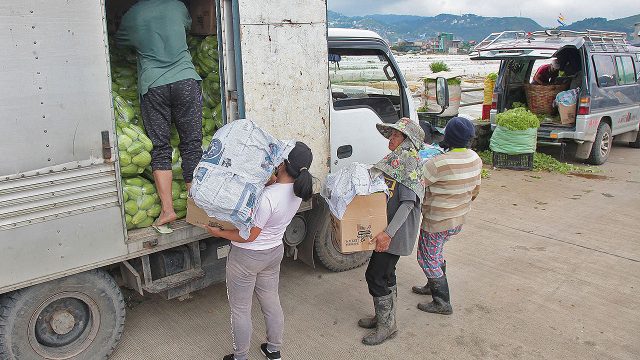It can be Christmas the whole year through for those who are real followers of Christ and believe in his teachings. This can be discerned from my favorite Christmas carol which is “Joy to the World.” The words do not only convey the truth that a Christian can thoroughly enjoy his stay on earth if he is really a faithful follower of Christ, the very melody is so uplifting that one can really feel the joy of living. Other Christmas carols — also very inspiring (like “Silent Night” or “O Little Town of Bethlehem”) — are too somber and don’t make you jump for joy.
“Joy to the World” reminds us that since Jesus came to the world to save us from the only evil — which is sin — God has restored His original plan when He created our first parents to be happy in Paradise. That means that we should find our happiness first on Earth. No one can expect to go to Heaven if he or she does not have a joyful existence on Earth. It is a doctrinal error for some Christians to believe that we must go through hell (spending our time on Earth always in suffering and pain in a so-called valley of tears) in order to be able to win the eternal bliss in Heaven. In fact, someone who is not happy on Earth cannot expect to go to Heaven.
The key here is to equate joy with love. God is Love itself. The way to God is Love in all its forms.
First, there is what the Greeks called Storge or affection. This is the most natural and common love. It is instinctive: one does not have to make an effort to love with affection. It is found, for example, in families, such as the love of parents for children and vice versa. Affectionate love is warm, familiar, and humble, often growing quietly from daily life and shared experiences. It can also apply analogously to affection to other worldly creatures since everything God created is good and lovable. One can say, “I love adobo,” “I love Boracay,” “I love Kitty, my pet cat,” “I love the moon and the stars,” etc., etc. All these forms of love for God’s creatures, both human and non-human give us joy, although quite fleeting.
A more enduring joy can be found in what the Greeks called Philia or friendship. In his book The Four Loves, the writer C. S. Lewis considers it one of the least emphasized but most rewarding forms of love. It is the love between friends who share common interests, values, or pursuits. It is based on mutual respect and companionship. It is not driven by necessity or biology but by freely chosen connection. This connection is normally based on shared experiences. For example, some of our lifelong friends were our classmates in grade school, high school, or college. We nurture friendship with those who share with us the same interests in sports (like golf, tennis, running, mountain climbing); or some common hobbies like gardening or stamp collecting; or common professions or occupations. Spending time with friends is one of our most enjoyable moments.
In fact, the reverse is true: having no friends or being lonely is today, especially in highly economically developed countries like the US, considered the leading human sickness or disease. It is alarming to see loneliness as a leading reason for people committing suicide. This is especially true in societies where the family as the foundation of society has broken down because of widespread divorce, single parenthood, or voluntary childlessness.
The third form of love is called Eros in Greek or Romantic Love. This form of love is more than sexual desire. This is “being in love with the entire person.” The focus is on the entire person. If the focus is only on the sexual pleasure one can derive with the partner of the opposite sex, it is not romantic love but lust, the so-called concupiscence of the flesh according to St. John the Evangelist. The culmination of romantic love is marital love between a man and a woman joined in an indissoluble union (as Pope Leo XIV recently reminded Catholics) whose primary purpose the procreation of children. Married people in a stable marriage can attest to the fact that marital love produces one of the highest forms of human joy, including, of course, the love for the ensuing children. The negation of this truth about marriage and procreation in many modern societies has led to the tragedy of rapid population decline and the subsequent ageing of the population which is wreaking havoc on countries like Japan, Spain, and South Korea, not excepting even modern China. We often hear the billionaire Elon Musk lament that the greatest obstacle to economic progress today is the rapid depopulation and subsequent ageing in practically all the developed economies.
The fourth and highest form of human love is called Agape in Greek, which is to make an effort to love as God loves. Agape is seeking the good of others without expecting anything in return. When God created us, He did so out of the purest form of love, seeking our happiness without expecting anything in return. His love for us was unconditional and selfless. When we try to imitate God in loving our fellow human beings, we seek the good of others without expecting anything in return, even at personal costs. When we perform corporal or spiritual works of mercy, for example, we are loving with Agape because we are not expecting anything in return from the beneficiaries of our good works. Patriotism is a form of Agape because we are working for the common good of Philippine society made up of people most of whom we do not know personally.
This form of love — patriotism or civic mindedness — is what is sorely wanting in our society. Unless we have a critical mass of Filipinos who are determined to promote the common good of our country in their personal behaviors, we will not be able to bring down corruption to tolerable levels. In our ongoing efforts to combat the very high level of corruption that were unearthed by the flood control scandals, it is necessary to do what some segments of business, civil society, the academe, and the Church have admirably pursued, i.e., to publicly protest and demonstrate against the corrupt practices and the corrupt people themselves.
It is necessary also to demand that those proven to have stolen trillions of pesos be jailed, and that public institutions, like the departments of Public Works and Highways and Health, the Legislative bodies and others, be reformed to minimize corruption. It is also right that measures be taken to minimize the nefarious influences of family dynasties on national and local governments. All these are necessary, and for the minority of Filipinos who are engaged in all these efforts for reform, I am sure they are already being rewarded with the joy of living Agape as shown in their patriotism.
All these, though necessary, are not sufficient to bring corruption down to tolerable levels.
Obviously, corruption cannot be completely eradicated because, as the guru of good governance, former Secretary of Finance and Founder of the Institute of Corporate Directors (ICD) and Institute for the Solidarity of Asia (ISA), Dr. Jesus Estanislao, told a young idealistic professional, “Corruption cannot be completely eradicated because we human beings are all sinners.” The occasion was in a talk given by Dr. Estanislao at the Sangandaan Cultural Center at the Legaspi Village in Makati. He was just trying to be realistic.
In the context of our beliefs as Christians, trying to completely eradicate corruption is to attempt to eradicate Original Sin. No matter how much we try to perfect our institutions in order to make sure they are led by people of integrity and have the necessary preventive measures against corrupt practices, there will always be those “sinful humans” who will be creative and ingenious enough to beat the system. We can only try our best to minimize corrupt practices.
Bernardo M. Villegas has a Ph.D. in Economics from Harvard, is professor emeritus at the University of Asia and the Pacific, and a visiting professor at the IESE Business School in Barcelona, Spain. He was a member of the 1986 Constitutional Commission.
bernardo.villegas@uap.asia












